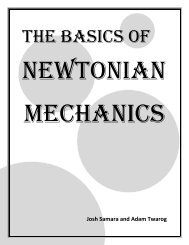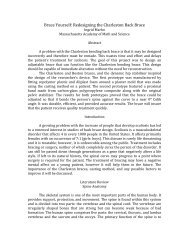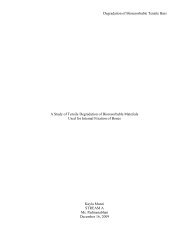Art Forgeries and Their Detection - the Scientia Review
Art Forgeries and Their Detection - the Scientia Review
Art Forgeries and Their Detection - the Scientia Review
You also want an ePaper? Increase the reach of your titles
YUMPU automatically turns print PDFs into web optimized ePapers that Google loves.
Archeological <strong>Forgeries</strong><br />
Archeological relics are forged so <strong>the</strong>y can<br />
be soled to museums for large sums of<br />
money.<br />
Among <strong>the</strong> years, many archeologists have set up excavations to unearth<br />
artifacts that would tell us more about pre-historic life <strong>and</strong> civilizations.<br />
When <strong>the</strong>se relics are found, <strong>the</strong>y are normally sold to museums where<br />
<strong>the</strong>y can be studied fur<strong>the</strong>r. Forgers replicate <strong>the</strong>se antiquities to make<br />
money, <strong>and</strong> for a while <strong>the</strong>y have succeeded, numerous works of art <strong>and</strong><br />
photographs such Francias Hetling’s Victorian Waifs have been in muse-<br />
ums for years before <strong>the</strong>y have been reviled to be fakes. In order to de-<br />
tect whe<strong>the</strong>r an ancient artifact is au<strong>the</strong>ntic or not, scientists mostly per-<br />
form neutron activation tests, as well as carbon dating tests.

















